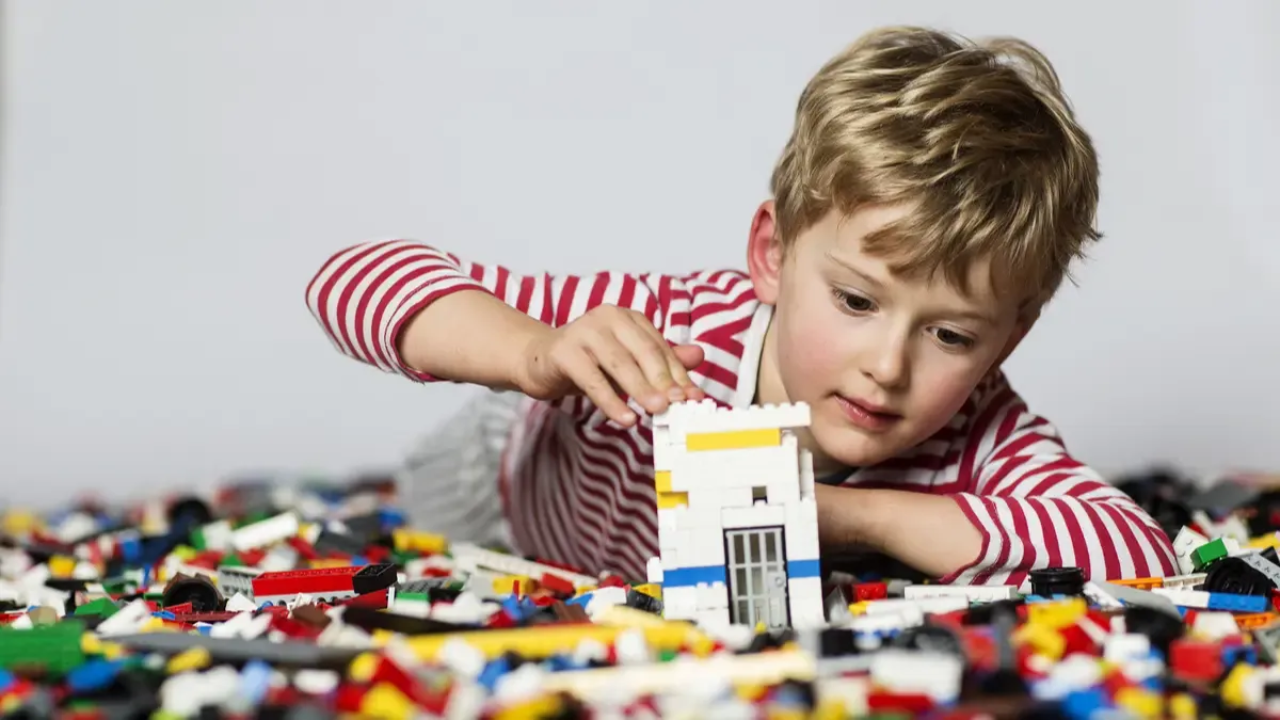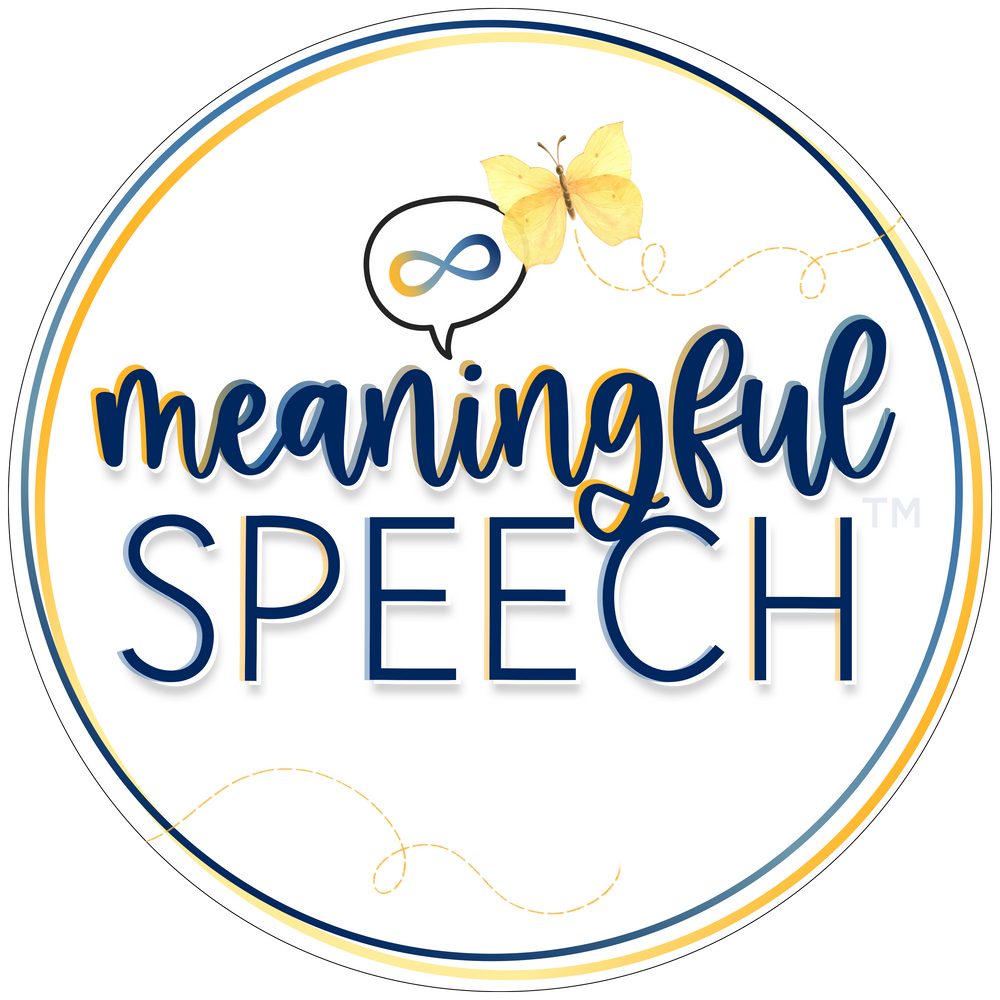How to know if a child is a gestalt language processor if they’re not scripting
May 10, 2023
This week we’ve teamed up with Laura Hayes, the instructor of our AAC for Gestalt Language Processors course, to discuss how to know a child is a gestalt language processor if they’re not scripting. There are other signs a child might be a gestalt language processor!
Gestalt Language Development is more than scripting
Most people think only of echolalia or "scripting" when they think of gestalt language processing and identifying whether a child is a gestalt language processor, but, there are more signs to look for, especially for complex and creative communicators!
Other signs of a child is a gestalt language processor besides echolalia
- Rich intonation. Gestalt language processors have been called “intonation babies”. This is because they are attracted to the high emotion and intonation of utterances. With children who use rich intonation, it may be difficult to understand what they’re trying to say, but the intonation they’re using gives it away. If you tune in, it may sound like a line from their favorite TV show, a song or a sentence from a favorite book you always read together.
- Gestalt Cognitive Processing. The child is a whole-to-part thinker. Their experiences are held primarily as episodic memories. They conceptualize events as whole routines derived from past experience(s) of them. We have an entire bonus module by Autistic speech-language pathologist Rachel Dorsey, on Gestalt Cognitive Processing in our original course.
- For example, a child conceptualizes “speech therapy” sessions based on the first experience they had with speech therapy. Speech therapy = SLP picks them up from class, they go to the room at the end of the hall to the right, they play with cars, trucks, read a book and get a sticker, then the SLP walks me back to class. This is how speech therapy should always go in order for it to be speech therapy. Sometimes GLPs struggle when there are deviations from these routines due to their strong episodic memory and gestalt thinking style.
- Echopraxia. Echopraxia is echolalia with movements, not speech. Echopraxia is very common amongst gestalt language processors and autistic individuals. It is similar to delayed echolalia because it’s used to communicate a gestalt through movements that encompasses a larger meaning, often a full experience. Echopraxia just like echolalia communicates.
- For example: Echopraxia can be as simple as making the same sad face as a character in a show in order to communicate the gestalt from the show. It can be as complicated as acting out a full scene from a youtube clip using their arms, legs, and face.
- Listening, learning and/or communicating from scenes/bytes of media or audio clips. They may replay the theme song or intro of a TV show repeatedly instead of watching the show. They may be more drawn to the melody and intonation of this part of the video and not as interested in watching the show. They may fast forward or rewind to a certain part of the show to communicate with you.
- They are very musical. They are drawn to songs and song melodies, they might not be speaking yet but can sing songs. Songs are often first gestalts, especially for non-speaking or minimally speaking gestalt language processors.
- Uses an AAC (Augmentative and Alternative Communication) device but is “stuck”. Unfortunately, AAC systems are not yet developed with gestalt language processors in mind. This often leaves many gestalt language processors stuck and not making much progress with their devices. However, there are ways you can customize current systems to grow with gestalt language processors through the stages.
- Single Words. They are using single words with limited spontaneous use of words across contexts. The single words they have aren’t being combined with other words to create self-generated phrases and sentences. These single words often hold a much larger meaning than the word itself.
- For example: The word “dog” is used to refer to all pets. It isn’t used outside of labeling dogs/pets, and it isn’t being combined or expanded on with other words (ex: big dog, brown dog)
- They aren’t responding to “traditional” or analytic strategies. The child has been in speech-language therapy for quite some time and isn’t responding to or is making minimal progress with analytic strategies such as expansion, grammar, wh-questions, vocabulary building, etc.
What to do if you're still unsure
- Take a lot of language samples. These will help you get a good look at the child's overall language and determine if there are any signs they're a GLP. If the child is non-speaking to minimally speaking, language samples can include more info than just language. You can write down the sounds you hear, and what they're doing with their body.
- Acknowledge all communication! Even if you don't know the meaning of a child’s gestalt or what they're trying to communicate. You can acknowledge their communication by nodding, smiling, repeating it back to them, saying “yeah” or “okay!”.
- Explore AAC. Research shows that AAC does not hinder speech development, rather it helps enhance communication. If a child is non-speaking, minimally speaking, or their speech does not support them to autonomously communicate to communication partners across situations and environments, begin exploring AAC with the child. You’ll want to explore robust systems.This means the system includes many different types of vocabulary (core words, fringe vocabulary, access to the alphabet) and allows the child to communicate for a wide variety of reasons (e.g. request, protest, share information, share opinions, ask questions, etc.).
Want to learn more in-depth information about how to support gestalt language processors?
- There are many free podcasts, webinars and articles to get you started. A comprehensive list of resources can also be found on our website and Communication Development Center's website.
- Consider taking the Meaningful Speech course to learn more about how your child or client processes language, how you can help support them from echolalia to self-generated (original flexible) language, child-led therapy, and neurodiversity-affirming practices.
- Consider taking our AAC + Gestalt Language Processing course. It will teach you how to identify, evaluate and support gestalt language processors who use AAC or who you think might benefit from AAC.
- Look for a speech-language pathologist (SLP) who "gets it" and can help you in supporting your child's language development. Check out our registry for SLPs who understand gestalt language processing and child-led therapy.
